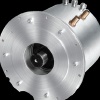Индустриален клъстер "Електромобили" - Учредители:








 |

|

|
| Актуално | За клъстера | Екип | Членове | Документи | Анализи | Услуги | Стани член | Награди | ССЕМ | Контакти |
ИКЕМ - Индустриален клъстер "Електромобили" | Вторник, 23.12.2025 | |
|
Electric Vehicles’ Global Warming Emissions
Over the past 100 years, we have become increasingly dependent on our cars for meeting life’s most basic needs. For most Americans, getting to and from work, bringing food home from the grocery store, or going to the doctor means using one’s car. This reliance on the automobile, and on the petroleum-powered internal combustion engine in particular, comes with significant costs. Our dependence on oil makes our overall economy and household budgets highly vulnerable to volatile oil prices. The pollutant emissions from our vehicles contribute to unhealthy air and global climate change. As the search for oil moves to more remote and difficult-to-access locations, the risk of serious accidents increases, as demonstrated by the 2010 Deepwater Horizon oil spill in the Gulf of Mexico. And defending our access to oil is a great burden to our nation’s finances, our military men and women, and their families. |
Продукти 
Комплектна система за задвижване на електромобилиСистемата за електрозадвижване обхваща гама с три основни типоразмера на ел. мощност със съответните компоненти - електромотор и контролер. oще ...Виж всички продуктиАнкета с продължение...
|
|
|
 ЕВРОПЕЙСКИ СЪЮЗ Европейски фонд за регионално развитие Инвестираме във вашето бъдеще |
 |
 ОПЕРАТИВНА ПРОГРАМА „Развитие на конкурентоспособността на българската икономика” 2007-2013 www.opcompetitiveness.bg |
|
Интернет страницата е създадена с финансовата подкрепа на ЕФРР, в рамките на проект „Развитие на Индустриален Клъстер Електромобили” по ДБФП К-02-2/28.09.2011 г. |
|||